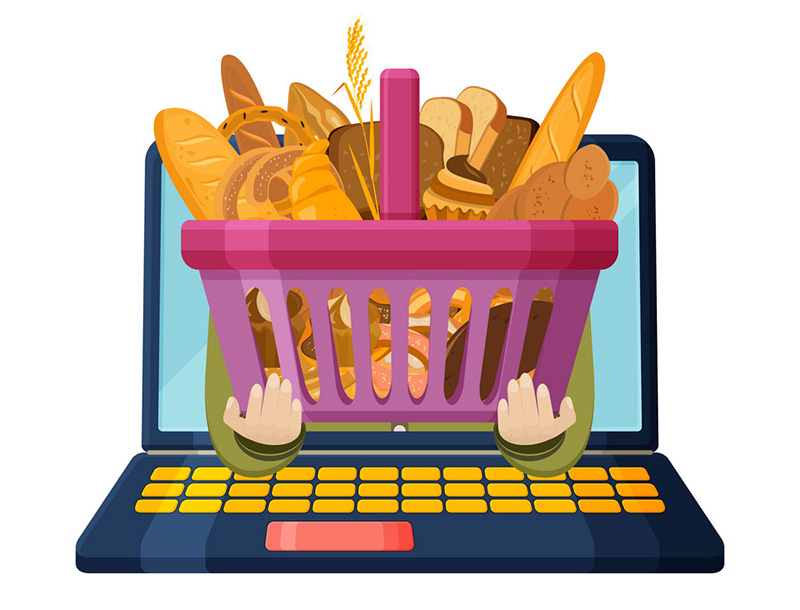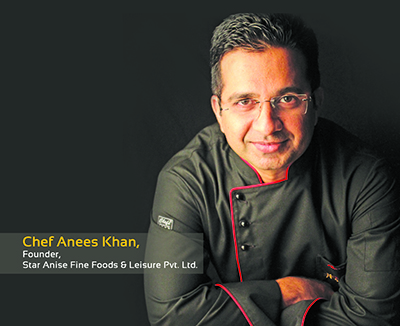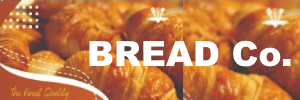BakeryBiz, May-June, 2021
During these lethargic times, one needs to wake up to the amount of food and the fat that they intake. Chef Kunal Arolkar throws light on the danger called FAT.

The Author is a Michelinexperienced
Pastry chef, Educationist,
Conversationalist, Booze, Food & History Buff, with a Degree in Hotel Management, a penchant for controversy and a
guilt-free lifestyle. He
also happens to own and operate Foodybreaks, Goa’s First City&Guilds Certified Pastry school and Bakery in Porvorim, North Goa.
I wish everything was as easy as getting fat!”, popular funny quotes aside, the world we currently live in, has more opportunities for us to add those dreaded pounds, than ever before. Add to that, a pandemic that’s propagating a Stay at home campaign for Kids, a Work from Home based sedentary lifestyle for Adults and a barrage of deliverable commodities that are making people, especially urban dwellers, pack on a few extra pounds. People are finding a shrinkage in their comfort zones, so much so that, even getting up to receive the food delivered to our doorsteps is becoming a task. During these lethargic times, one needs to wake up to the amount of food and the fat that they intake, otherwise, a new wardrobe to Work from Office again, will be the least of our worries.
What is Fat?
Fat is a bad word in many fitness manuals, a blasphemous term that many self-help online trainers would have you believe, is the root cause of all health problems, but what is fat! Fat is the ester or fatty acids, or at times refers to the triglycerides present in vegetable oils, fatty acids in animals, and along with protein and carbohydrates, forms one of three main macronutrients in our food. Common foods containing fat are milk and milk products, animal and fish meat, cooking oils and are a dense source of food energy.
They can be simply classified into Saturated Fats or Solid fats from Milk and Milk Products, Unsaturated Fats which are Liquid at room temperature such as oils and Trans Fats which could be of plant or animal origin but which have been altered by a process called hydrogenation.
Types of Fats
1. Trans Fats: The deadliest of the lot, Natural or Artificial Transfats are known to raise LDL levels in consumers, and are commonly found in hydrogenated oils that is then found in all sorts of processed foods.
2. Saturated Fats: Also called Solid Fats, these are mostly found in animal products such as milk, cheese and red meat. It is also found in denser oils such as coconut, palm oil and cocoa butter. Bakery Foods also contain high amounts of saturated fats and they are known to increase cholesterol in humans.
3. Unsaturated Fats: These are mostly liquid at room temperature and are commonly found in plant oils, and are further divided into.
- a. Monounsaturated Fats which is found in avocados, nuts and vegetable oils such as olive, canola and peanut oils. This helps lower your LDL levels by keeping HDL levels high.
- b. Polyunsaturated Fats is commonly found in vegetable oils such as safflower, sunflower, sesame, soybean and corn and also in certain seafood (Omega 3 & Omega 6 Fatty Acids) and is said to be good for brain cell nurturing.
What is Transfat & Health problems associated with Transfat?
Transfats are a form of unsaturated fats, which come in both, natural and artificial forms. Natural transfats occur in meat and dairy products, which form naturally when bacteria in animals digest grass, a moderate intake of which is not shown to have any harmful effects on human consumers. However, artificial transfats or partially hydrogenated fats, which are added to or are used to chemically alter vegetable oils to increase shelf life, are quite hazardous to human health, and have found to increase the risk of heart disease, as a diet with a steady intake of transfats showed an increase in Low Density Lipids or LDL (Bad) Cholestrol without any benefit to the High Density Lipid (HDL) Levels, whereas most other fats tend to have a similar effect on both LDL and HDL levels. Studies also show a tendency of transfat consumers to develop diabetes and in some cases has also shown to cause insulin resistance in diabetics. Not to mention they have found cases where inflammation increased in people
with excess weight, whenever transfat was part of their diet. They are also known to damage the inner lining of blood vessels, called endothelium.
Trans fat in your food could be in the form of
• Industrialised or Mass Produced Baked goods, such as puffs, cakes, cookies, pies, etc
• Baker’s Shortening
• Microwave popcorn
• Frozen pizza and other Frozen Ready to Fry Products
• Refrigerated dough, such as biscuits and rolls
• Fried foods, including French fries, doughnuts and fried chicken
• Non-dairy coffee creamer
• All Types of margarine
• Most Processed Foods
Govt regulations in India governing Transfat & Acceptable Levels
In India, the body governing the food and drug industry, the Food Safety and Standards Authority of India (FSSAI ) has capped the amount of transfats in foods to 3 per cent for 2021 and 2 per cent in 2022, from the previous limit of 5 per cent, as per an Amendment to the Act done on Dec 29, 2020. In the U.S, manufacturers can only name their products as transfat free if transfats in their products is below 0.5 gms of the total fats in the servings.
Stay Away from Transfats
Being a Baker, it is a very painful statement for us to make, as much of what we produce has a higher amount of transfat, but keeping the general health of the consumer base as a whole, it makes more sense to adopt natural transfat in baking rather than the current artificial kind, which is surely not helping the consumers at all, otherwise why would it be limited. The reason it is so easily found in the subcontinent and places where it is very hot, is mainly because hydrogenated products stay longer on shelves and spoil less, but the cost you pay as a consumer is much higher than that you would pay, if you opted for fresher, spoilage-friendly food. Perhaps an easier way to understand it would be to check its condition in our hot summers, a block of margarine would stay solid even through an Indian summer, which at present averages around 35-36 deg C, which is about the same as our
normal human blood temperature. At this heat if its solid, it will need a lot more heat to burn off that fat, and using this rather, rudimentary logic, butter and other natural transfats probably have a better bet of being shed through exercise. So, choose your fat wisely and remember, “Inside every fat man, there is a thin man, trying to get out” – Anthony Horowitz.
Bibliography
https://www.healthline.com/nutrition/why-trans-fats-are-bad
https://www.fssai.gov.in/upload/media/FSSAI_News_TransFat_Hindu_04_01_2020.pdf
www.wikipedia.com
https://www.healthlinkbc.ca/health-topics/aa160619












